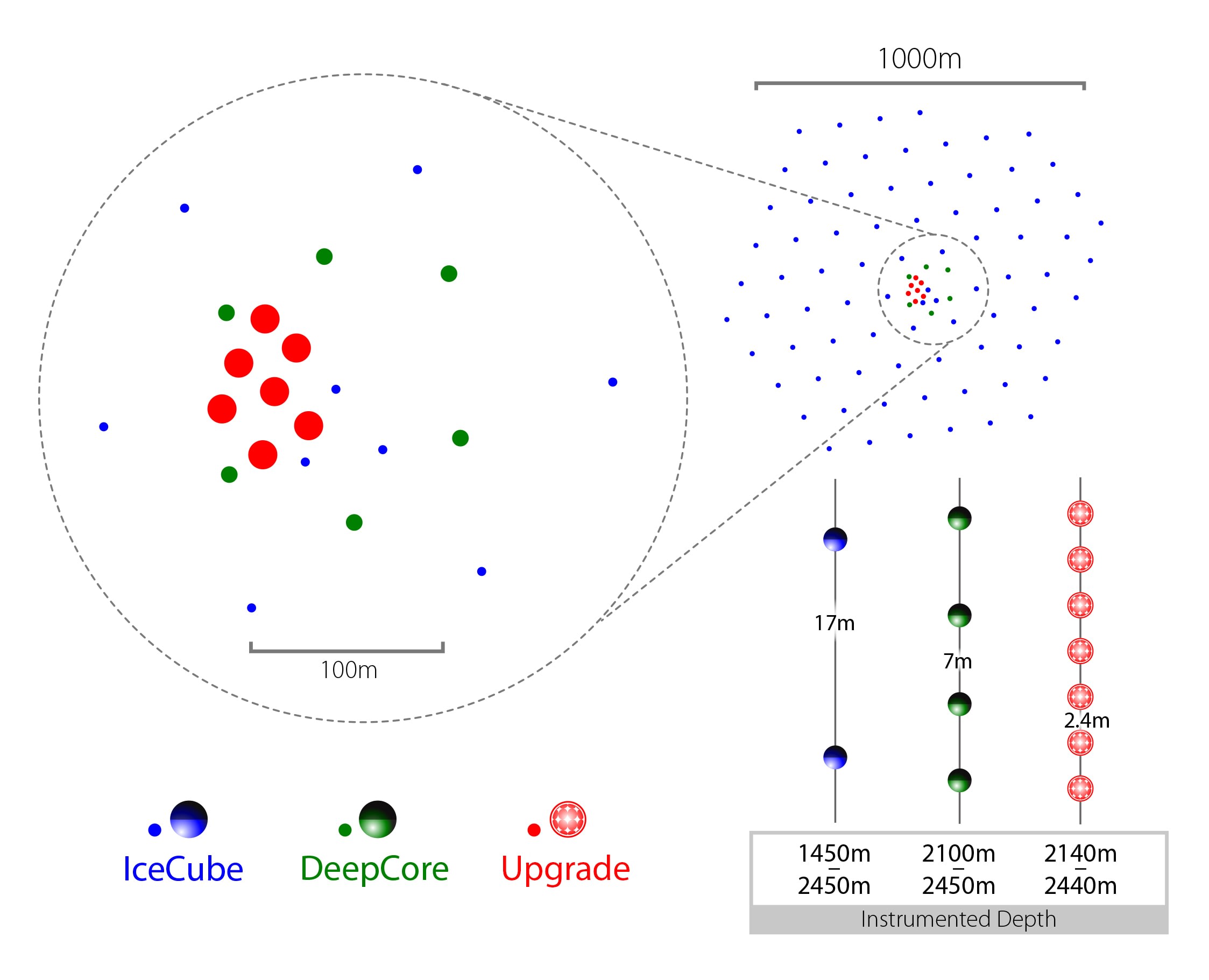-

IceCube at ICRC 2021
Last week marked the end of the 37th International Cosmic Ray Conference, the largest conference in the world for cosmic ray physics. This year, the entire conference was hosted virtually, which allowed more people from an expanded geographic range to attend; there were approximately 1,800 participants from 55 countries who contributed around 1,350 papers. It…
-

IceCube-Gen2 will open a new window on the universe
On December 18, 2010, IceCube’s final DOM (digital optical module) was lowered into a hole in the ice at the South Pole. After seven years of construction—and many more years of international collaboration around design and planning—the IceCube Neutrino Observatory was complete. The detector now had 5,160 DOMs on 86 cables (“strings”) frozen into a…
-

IceCube at Neutrino 2020
Today kicks off the second week of the 29th biennial Neutrino conference, the world’s biggest conference in neutrino physics. Due to the coronavirus pandemic, Neutrino 2020 is being held virtually over the course of two weeks, starting last Monday, June 22, and ending this Friday, July 2. According to a press release by the Department…
-

IceCube at ICRC 2019
The 36th International Cosmic Ray Conference finished up last week at the University of Wisconsin–Madison. From July 24 to August 1, over 800 cosmic ray physicists gathered at the Memorial Union on Lake Mendota to discuss the latest in cosmic ray research. The IceCube Collaboration had a large presence at this ICRC because UW–Madison is…
-

NSF mid-scale award sets off the first extension of IceCube
The IceCube Neutrino Observatory, the Antarctic detector that identified the first likely source of high-energy neutrinos and cosmic rays, is getting an upgrade. On June 25, 2019, the National Science Foundation (NSF) approved full funding to upgrade the IceCube detector, extending its scientific capabilities to lower energies and thus enabling IceCube to reach neutrino energies…
-

IceCube Upgrade for precision neutrino physics and astrophysics kicks off
That IceCube has big plans for a larger and improved neutrino detector is not a secret. This week, the launch of the so-called IceCube Upgrade—which will deploy seven new strings at the bottom of the detector array—sets a milestone in what IceCubers have designed as an incremental extension of the Antarctic detector. The IceCube Neutrino…
-

Exploring the possibility of detecting extragalactic supernovae with IceCube-Gen2, summer research with IceCube
International Research Experiences for Students (IRES) is a program funded by the National Science Foundation to support active participation of US undergraduates in international research projects. Vanessa Esaw, Nick Kulacz, Nick Jensen, Jack Nuckles, and Samantha Pedek participated in the IRES program through UW–River Falls to work on IceCube research for the summer at Stockholm…
-

IceCube 2014 in brief
Yet another year has come to an end for IceCube with plenty of new science results, an always growing international collaboration, and plans for an update to the IceCube Neutrino Observatory. In the meantime, the detector’s performance has broken still another record, and many outreach activities, including the recently launched IceCube Masterclass, accompanied this hectic…
